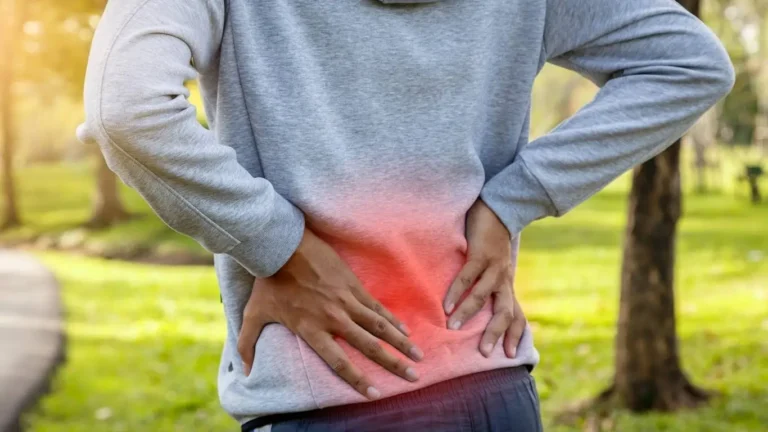Best Exercise Strategies to Relieve Rheumatoid Arthritis Knee Pain Fast
As a Rheumatology Nurse Practitioner, I’ve seen firsthand how devastating rheumatoid arthritis (RA) can be, especially when it affects the knees. This condition can cause debilitating pain and stiffness, making everyday movements feel like a challenge. But here’s the thing—exercise can actually be one of the most powerful tools in managing rheumatoid arthritis knee pain. And no, I’m not talking about strenuous workouts or pushing yourself to extremes. In fact, the right kind of exercises, when done with care, can significantly reduce pain, improve mobility, and even help prevent further joint damage.
Why Exercise Matters for Rheumatoid Arthritis Knee Pain
Now, I get it—if you’re living with rheumatoid arthritis knee pain, the idea of getting moving might feel like the last thing you want to do. But hear me out: exercise can be a game-changer. Rheumatoid arthritis is an autoimmune disorder that primarily targets the joints, causing inflammation. In the case of the knee, this can lead to swelling, stiffness, and chronic pain. So, how can exercise help in this situation? Well, it’s all about reducing inflammation, strengthening surrounding muscles, and improving the overall range of motion in your knees.
One of the reasons exercise is so beneficial for RA patients is that it helps maintain a healthy weight. Excess body weight puts additional stress on the knees, which can make inflammation and pain worse. By staying active, you not only relieve pressure on your joints but also improve the function of the muscles that support them.
Choosing the Right Exercise for RA Knee Pain
It’s crucial to choose the right exercises. Not all activities are created equal when it comes to rheumatoid arthritis knee pain. Some exercises can put unnecessary strain on your joints, leading to more inflammation and discomfort. But others can help build strength, increase flexibility, and reduce overall pain. So, what are the best options? Let’s dive into a few.
Low-Impact Aerobic Exercises
Low-impact aerobic exercises are fantastic for people with RA because they get your heart pumping without putting undue stress on your joints. Think activities like swimming, cycling, and walking. These types of exercises can improve your cardiovascular health while keeping joint pain at bay.
Swimming is one of my personal favorites—there’s something incredibly soothing about floating in the water while still getting in a full-body workout. The buoyancy of the water reduces the pressure on your knees, and the resistance helps build strength without straining your joints. Plus, swimming is gentle on your knees while being highly effective in strengthening the surrounding muscles.
- Improves cardiovascular health
- Strengthens muscles around the knee
- Reduces inflammation in the joint
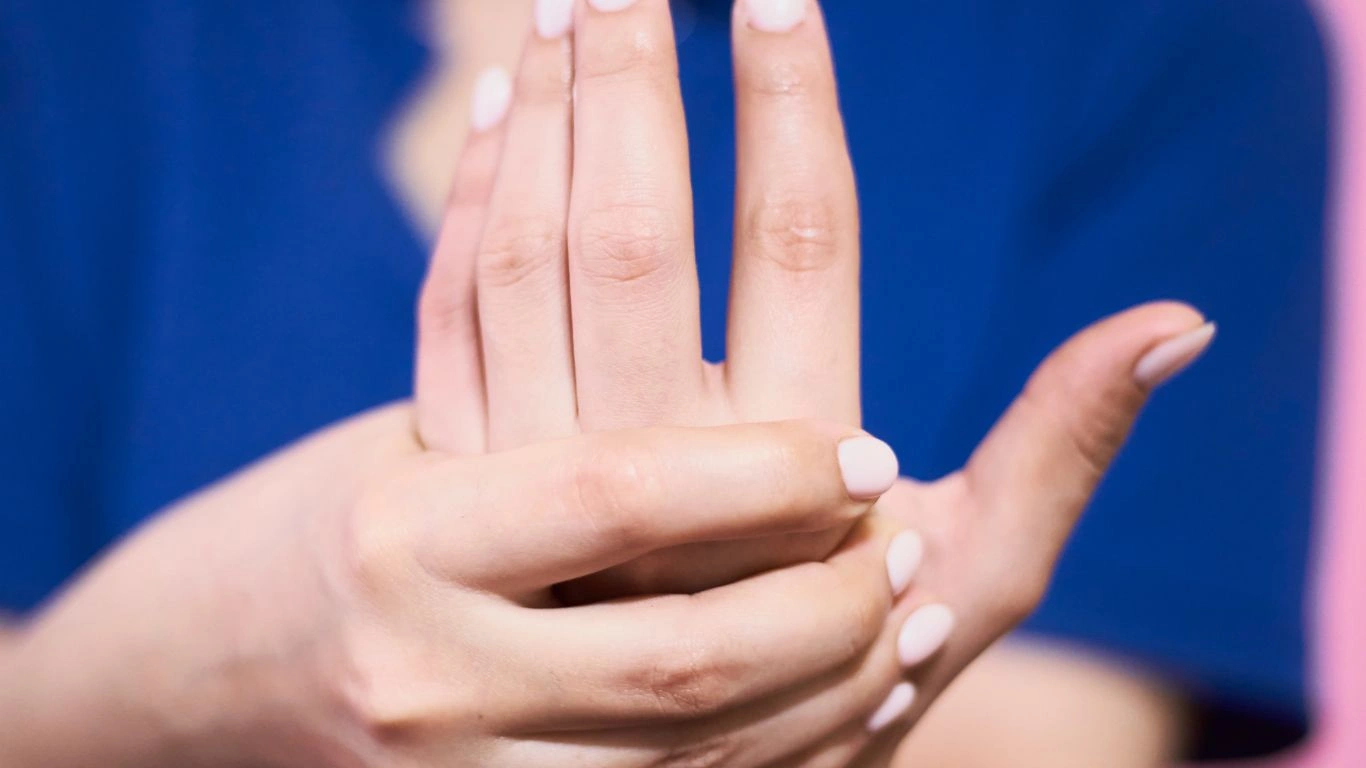
Strengthening Exercises for the Muscles Around the Knee
When it comes to knee pain, stronger muscles around the joint can make all the difference. Targeting your quadriceps, hamstrings, and calf muscles with strengthening exercises can offer significant relief by improving joint stability. A common misconception is that if you have joint pain, you should avoid strengthening exercises—but in reality, building strength around the knee can reduce the burden on the joint itself, decreasing inflammation and pain.
Some effective exercises include leg lifts, wall sits, and step-ups. These exercises engage your quads and hamstrings while keeping pressure on your knees low. Start with light resistance and gradually increase as you feel stronger. But remember, the key is to focus on good form, and don’t rush through the movements—slow, controlled motions are more effective and safer for those with RA.
- Leg lifts: Strengthen quads without stressing the knee joint
- Wall sits: Build endurance in the quadriceps
- Step-ups: Focus on improving balance and strength
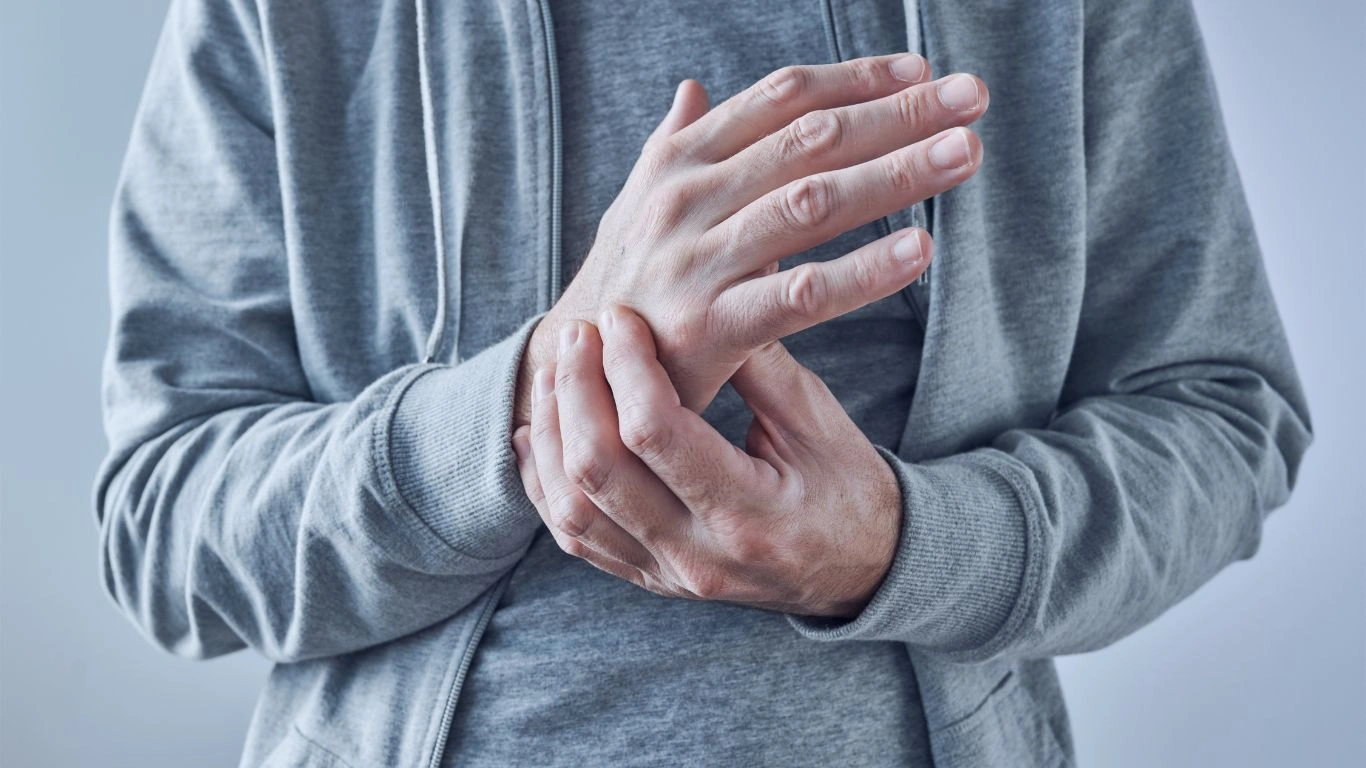
Stretching to Improve Flexibility
Another important component of managing rheumatoid arthritis knee pain is flexibility. Stretching exercises help to keep the muscles and tendons around your knee flexible, which can reduce stiffness and improve the range of motion. A tight IT band (the connective tissue along the outside of your thigh) or tight hamstrings can put additional stress on your knees, contributing to pain and discomfort. Stretching these areas can provide relief and reduce your overall pain levels.
Some gentle stretches that target the knee area include the quadriceps stretch, hamstring stretch, and calf stretch. Hold each stretch for about 30 seconds and repeat two to three times. These stretches are easy to incorporate into your routine and can be done in the comfort of your own home.
- Quadriceps stretch: Stretch the front of your thigh
- Hamstring stretch: Focus on the back of your thigh
- Calf stretch: Lengthen the muscles that support your knees
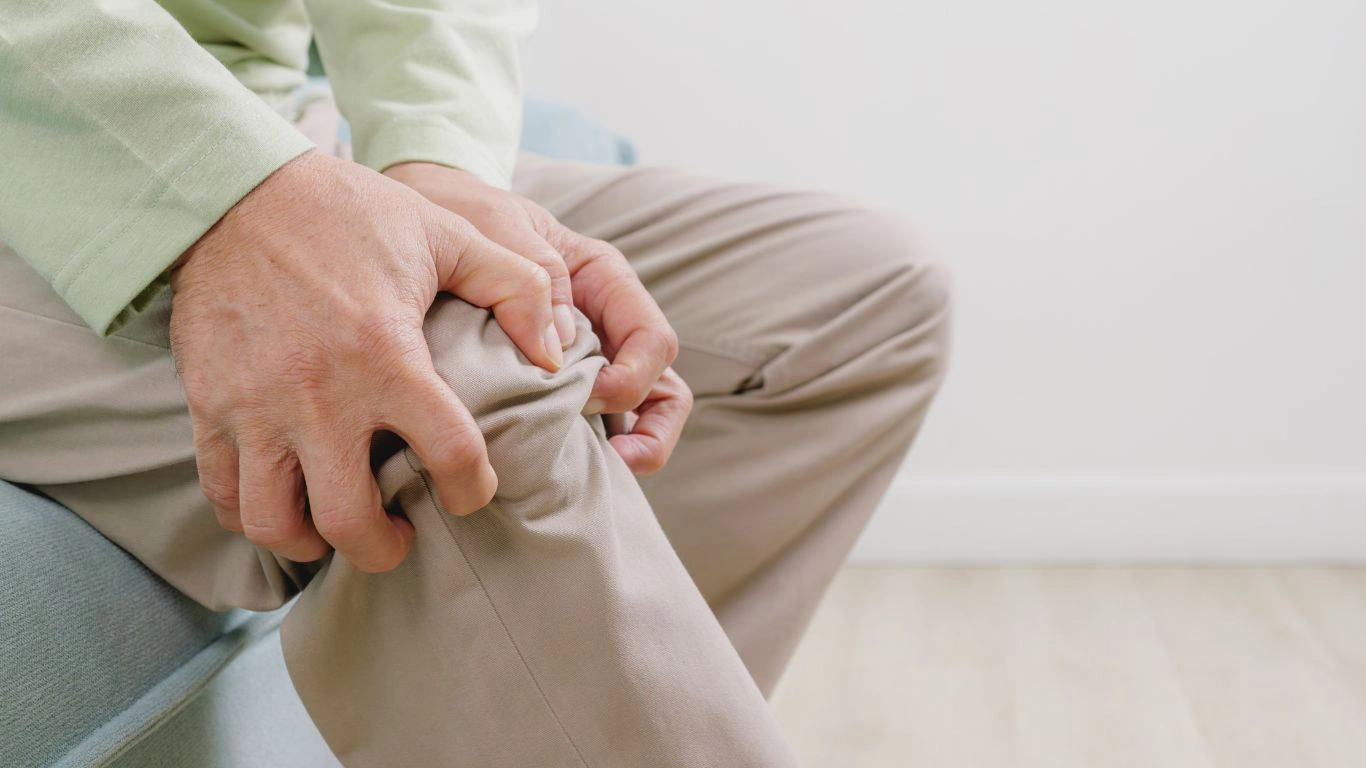
Getting Started: Exercise Tips for RA Knee Pain
If you’re just getting started, remember that you don’t need to dive into a full-fledged exercise routine right away. Start slow and listen to your body. I always tell my patients that it’s better to start small and gradually build up than to push too hard and risk exacerbating pain or injury. Start with 10-15 minutes of light activity a few times a week and increase as your body adapts.
And don’t forget: consistency is key. The more regularly you exercise, the more you’ll notice improvements. Also, consult with your healthcare provider before starting any new exercise routine to make sure it’s safe for your specific condition.
Managing RA Knee Pain with Strength and Flexibility
Continuing from where we left off, now that you’re familiar with some of the best exercises for reducing rheumatoid arthritis knee pain, let’s dive deeper into how strength and flexibility work together to make a real difference. I’ve seen in my practice that a combination of both is essential for long-term relief. Strengthening muscles around the knee, as we mentioned earlier, can help offload some of the stress from the joint itself. But flexibility plays just as critical a role by preventing tightness and helping maintain mobility.
So, how exactly do these two elements—strength and flexibility—work together in your fight against RA knee pain? Let’s break it down.
The Role of Strength in Protecting the Knee Joint
Strengthening the muscles around the knee, particularly the quadriceps, hamstrings, and calves, is incredibly important for anyone with RA. It’s not just about bulking up these muscles—it’s about stabilizing the knee joint so it’s less prone to injury and more capable of handling stress. Think of it like building a solid foundation for a house: the stronger the foundation, the less likely the house is to collapse under pressure. Similarly, the stronger the muscles around your knee, the less burden your actual knee joint will bear.
I’ve had numerous patients tell me how surprised they were by the difference strengthening exercises made. For instance, one of my patients, a woman in her 50s, started doing quadriceps strengthening exercises like leg presses and squats (modified, of course) and noticed a significant decrease in her knee pain. At first, she was hesitant, thinking that using weights would only make things worse. But with some education and a tailored program, she was able to see how strength building wasn’t about pushing through pain but rather about protecting and supporting the joint.
- Quadriceps: These large muscles in the front of your thigh are key to knee stability. They help straighten the knee and support the patella (knee cap).
- Hamstrings: The muscles at the back of your thigh help bend the knee and provide balance against the quadriceps.
- Calves: These muscles help stabilize the knee during walking and other weight-bearing activities.

Flexibility: The Secret to Reducing Stiffness and Improving Mobility
Flexibility exercises are just as crucial in managing RA knee pain. When your muscles and joints become stiff, it’s harder to move, and that leads to even more discomfort. But here’s the good news: regular stretching can help prevent that stiffness. You might be thinking, “I already have enough pain; I don’t want to stretch and make it worse.” Trust me, I totally understand the hesitation. But here’s the deal—gentle, controlled stretching can increase your joint’s range of motion and reduce tightness, which ultimately helps reduce pain.
It’s the same principle I often explain to patients who are unsure about the importance of stretching: imagine trying to move through thick mud versus moving through water. When your joints are stiff and tight, it’s like moving through mud—it’s harder, slower, and more painful. Stretching helps “thin the mud,” so to speak, and makes it easier for you to move freely.
Some of the most effective stretches for RA knee pain focus on the hamstrings, calves, and hip flexors. These areas, when tight, can cause additional strain on your knees, but when stretched regularly, they can provide relief.
- Hamstring stretches: Reducing tightness in the back of the thigh can alleviate pressure on the knee.
- Calf stretches: Stretching the calves helps reduce tension in the lower leg that affects knee movement.
- Hip flexor stretches: Tight hip flexors can lead to poor posture and altered gait, causing unnecessary stress on your knees.
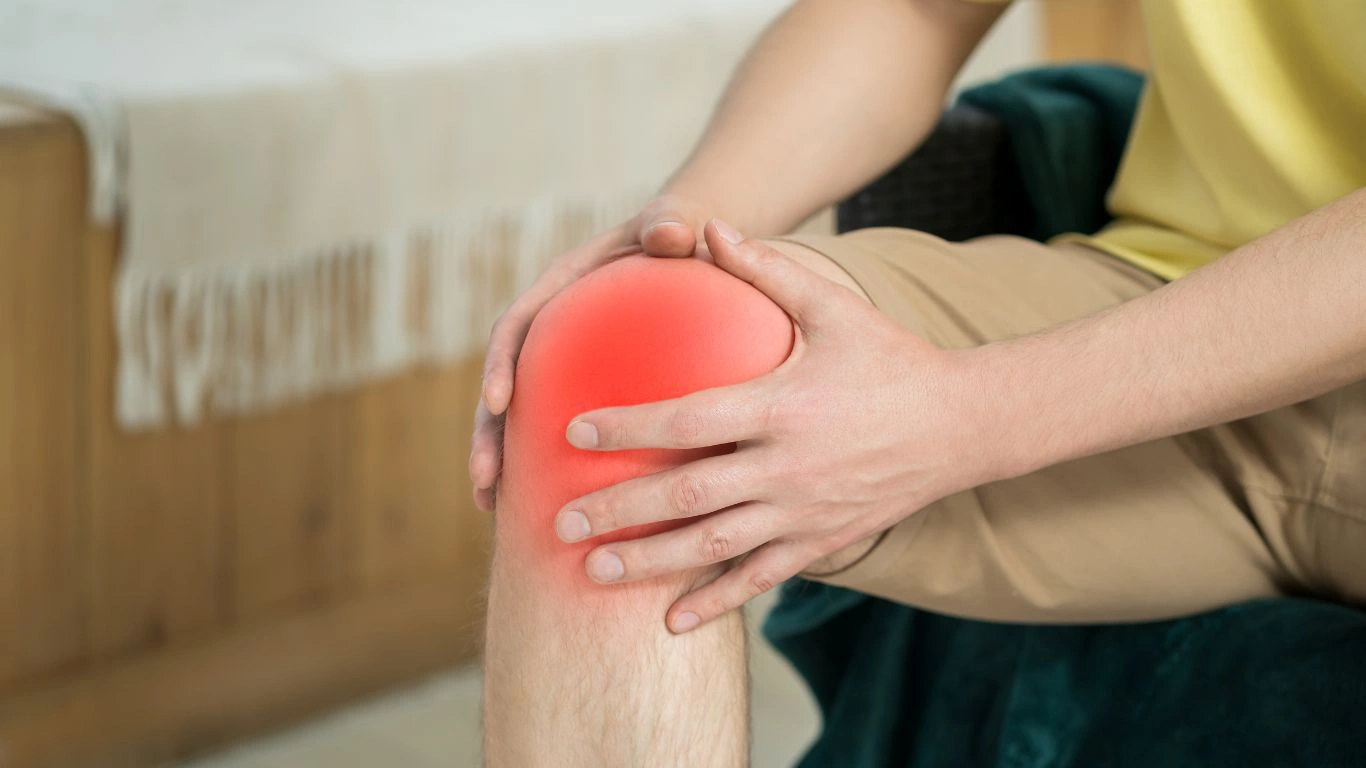
Joint Protection Techniques and Adaptive Strategies
Okay, so we’ve covered strengthening and stretching, but there’s more to managing RA knee pain than just exercise. Joint protection techniques are equally important to reduce unnecessary strain on your knees, especially when doing daily activities. I’ve found that many patients don’t realize how their movement patterns and posture can impact their knee pain. Simple changes can make a big difference.
Ergonomic Modifications
One of the most overlooked aspects of managing RA knee pain is how you perform tasks throughout the day. Ergonomic modifications, such as adjusting the height of your work chair or using assistive devices, can help reduce unnecessary pressure on your knees. For example, when working in the kitchen, using a stool to sit rather than standing for long periods can minimize knee strain. Also, if you use stairs frequently, consider installing a handrail to help you keep your balance and reduce the risk of joint stress when climbing or descending.
Additionally, when you’re out and about, try using a cane or knee brace if needed. These tools can provide extra support, giving your knees a break and preventing overexertion. Don’t be shy about using assistive devices! They’re there to make your life easier, not harder.
Adjusting Your Posture and Movement Patterns
When it comes to joint protection, your posture and movement patterns play a huge role. Poor posture can misalign your knees and cause additional stress on the joint. A simple adjustment like keeping your knees slightly bent when standing (instead of locking them) can reduce pressure. Also, avoid twisting motions that put strain on your knees. Try to keep movements fluid and straight to avoid unnecessary stress.
In my experience, patients who take time to learn about body mechanics often find that it’s the little tweaks in how they move throughout the day that make the most difference. For example, when you’re bending to pick something up, always bend at your hips and knees (not just your back). This protects both your knees and lower back, minimizing strain on both areas.
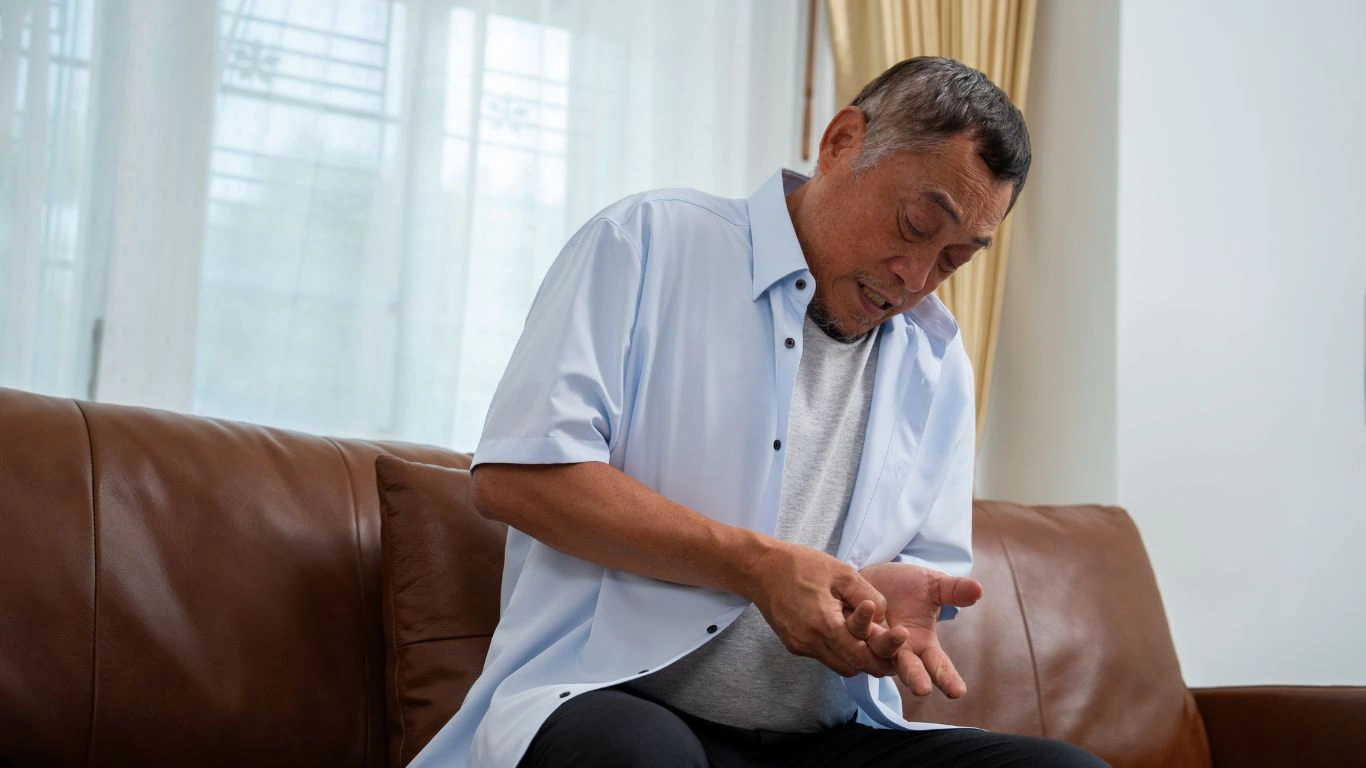
Hydration and Nutrition: Supporting Your Joints from the Inside Out
While exercise, posture, and joint protection are essential, don’t forget about hydration and nutrition—these elements work from the inside out to support joint health. Staying well-hydrated helps to maintain the synovial fluid that lubricates your joints. Without adequate fluid, your joints become stiffer and more prone to injury, especially when exercising. Aim for at least eight cups of water a day, but if you’re engaging in exercise or spending time in hot weather, you may need more.
Nutrition is just as important. Anti-inflammatory foods like omega-3 fatty acids, found in fish like salmon and sardines, can help combat the inflammation associated with RA. Additionally, foods rich in vitamin D, like fortified milk and leafy greens, play a key role in bone health, while turmeric and ginger have natural anti-inflammatory properties. I’ve recommended these dietary adjustments to many patients, and several have reported noticing a reduction in overall inflammation when combined with their exercise routines.
Overcoming Mental Barriers to Exercise with RA Knee Pain
One of the challenges I often see when working with patients dealing with rheumatoid arthritis knee pain is overcoming mental barriers to exercise. It’s totally understandable—when you’re in constant pain, the last thing you may want to do is move your body. I’ve had patients tell me they feel like their knees are “beyond repair,” or that exercising will only make things worse. I get it, I really do. But here’s where shifting your mindset becomes crucial.
While RA knee pain can be incredibly discouraging, taking that first step toward exercise is often the hardest part. The fear of pain can be overwhelming, and it’s tempting to retreat into a more sedentary lifestyle to avoid discomfort. However, one of the most common misconceptions is that activity will always lead to more pain. In fact, the opposite is often true. Gentle exercise can help manage inflammation, improve mobility, and most importantly, boost your mood and mental health.
Let me share a personal example. I had a patient, let’s call her Jane, who had been dealing with chronic knee pain for years. She was hesitant to start exercising because she was afraid it would exacerbate her pain. But after some careful education, we began with just a 10-minute walk every morning. Within a few weeks, Jane was reporting less stiffness and more flexibility. Slowly but surely, she began incorporating more variety into her routine. Now, a year later, she not only manages her knee pain better but also feels more confident in her body. It wasn’t about pushing through extreme discomfort, but rather about taking small steps toward healing.
Consistency is Key
Building consistency into your routine is crucial. I can’t emphasize this enough. It’s easy to get discouraged, especially when you don’t see immediate results. But with RA knee pain, the key is patience. You won’t see changes overnight, but if you stick with it, the benefits will be clear. The longer you stay consistent, the more your muscles will strengthen, and the better your range of motion will become.
Set small, achievable goals. Maybe it’s walking for 10 minutes a day or stretching for 15 minutes each morning. As you progress, you can increase the duration or add more challenging exercises. Celebrate every milestone, no matter how small. Progress in managing RA knee pain doesn’t always show up on the scale or in big leaps. Sometimes, it’s the little wins that matter most.
How to Stay Safe While Exercising with RA Knee Pain
Now that we’ve covered how to get started and the importance of mindset, let’s talk about safety. Exercising with rheumatoid arthritis knee pain requires extra caution, especially if you’re new to exercising or if your symptoms fluctuate. The good news is that with a few safety precautions, you can reduce the risk of injury and ensure you’re getting the most out of your workout routine.
Know Your Limits
When it comes to RA and exercise, one of the most important things is to listen to your body. You may experience flare-ups or days when your knees feel more painful than usual. On those days, it’s perfectly fine to modify your routine or even skip a workout entirely. It’s all about balance. If you push too hard on a flare-up day, you risk worsening your symptoms and setting yourself back. But if you back off a bit and opt for gentler exercises, you can still maintain your progress without further strain.
Pay attention to how your body responds during and after exercise. A little discomfort is normal as your body adjusts, but sharp pain or swelling should be a sign to take a break. As a rule of thumb, I always recommend starting with a warm-up and ending with a cool-down. This can help prepare your muscles for the work ahead and reduce the risk of injury.
Work with a Physical Therapist or Trainer
If you’re unsure where to start or how to perform exercises safely, consider working with a physical therapist or certified trainer who has experience with rheumatoid arthritis. A physical therapist can design a personalized program that addresses your specific needs while ensuring your safety. They can also teach you proper form, so you’re not putting unnecessary stress on your knees or other joints.
It’s worth noting that many physical therapists specialize in rheumatoid arthritis, and they can offer valuable guidance in preventing injuries while improving your knee function. This extra level of expertise can make a significant difference, especially if you’re feeling overwhelmed by the idea of creating a workout plan on your own.
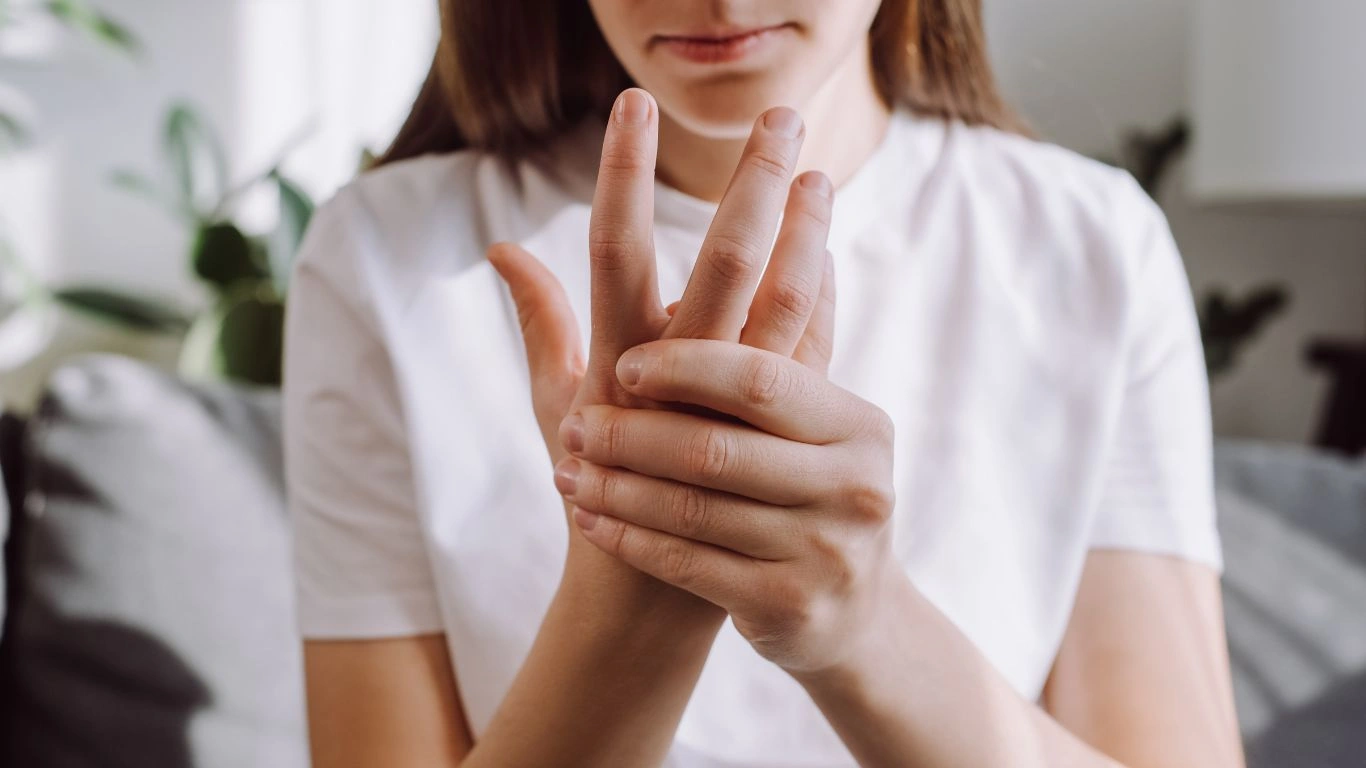
Stay Motivated: Tips for Long-Term Success
So, we’ve covered the exercises, the importance of mindset, and safety, but how do you keep going when the road gets tough? Staying motivated to exercise with rheumatoid arthritis knee pain can be challenging, but there are a few strategies that can keep you on track.
Find Activities You Enjoy
One of the best ways to stay motivated is to choose activities you genuinely enjoy. If you hate running, don’t force yourself to run just because it’s “good for you.” Instead, try swimming, cycling, or even dancing! The key is finding something that feels like fun rather than a chore. When you enjoy what you’re doing, you’re more likely to stick with it, even on days when your knees aren’t feeling their best.
Another patient of mine, David, absolutely loved gardening but had to stop because of his knee pain. Once we got him into a gentle stretching and strengthening routine, he was able to get back to doing what he loved. It wasn’t about jumping into heavy squats or long runs—it was about giving his knees the support they needed to continue doing activities that brought him joy. That kind of intrinsic motivation is priceless.
Track Your Progress
Tracking your progress can also be a great way to stay motivated. Whether you use a journal, a fitness tracker, or a simple checklist, seeing your progress in black and white can be incredibly encouraging. It helps remind you that the small efforts add up. Sometimes we get so caught up in the day-to-day that we forget how far we’ve come, and having a record of your milestones can be a nice reminder of how much progress you’ve made.
For example, one of my patients used to track her daily steps with a fitness tracker. Over time, she noticed that her daily step count gradually increased without any added pain. Seeing this tangible progress helped keep her motivated to keep moving, even on days when her knees felt stiff.

Additional Resources and Support
If you’re looking for more tips or advice on how to manage rheumatoid arthritis knee pain through exercise, there are plenty of great resources available. Websites like Health.com and National Institutes of Health (NIH) offer a wealth of information on RA and its management. Additionally, support groups, whether in-person or online, can provide a sense of community and reassurance that you’re not alone in your journey.
Joining a community of people with RA can be a huge motivator. They understand exactly what you’re going through and can offer personal insights, tips, and encouragement. Don’t hesitate to reach out and ask for support when you need it. Whether it’s a question about exercises or just a little pep talk, there’s strength in numbers.
Disclaimer
The information provided in this article is for educational purposes only and is not intended to replace medical advice from your healthcare provider. Always consult with your physician before beginning any new exercise routine or making changes to your current regimen. Individual needs and recommendations may vary, and a healthcare professional can help tailor a plan that works best for you.

Tarra Nugroho is a dedicated Nurse Practitioner with a strong foundation in family and preventive care. She brings both compassion and clinical expertise to her practice, focusing on patient-centered care and health education. As a contributor to Healthusias.com, Tarra translates medical knowledge into clear, empowering articles on topics like women’s health, chronic disease management, and lifestyle medicine. Her mission is simple: help people feel seen, heard, and informed—both in the clinic and through the content she creates. When she’s not caring for patients, Tarra enjoys weekend hikes, plant-based cooking, and curling up with a good health podcast.





